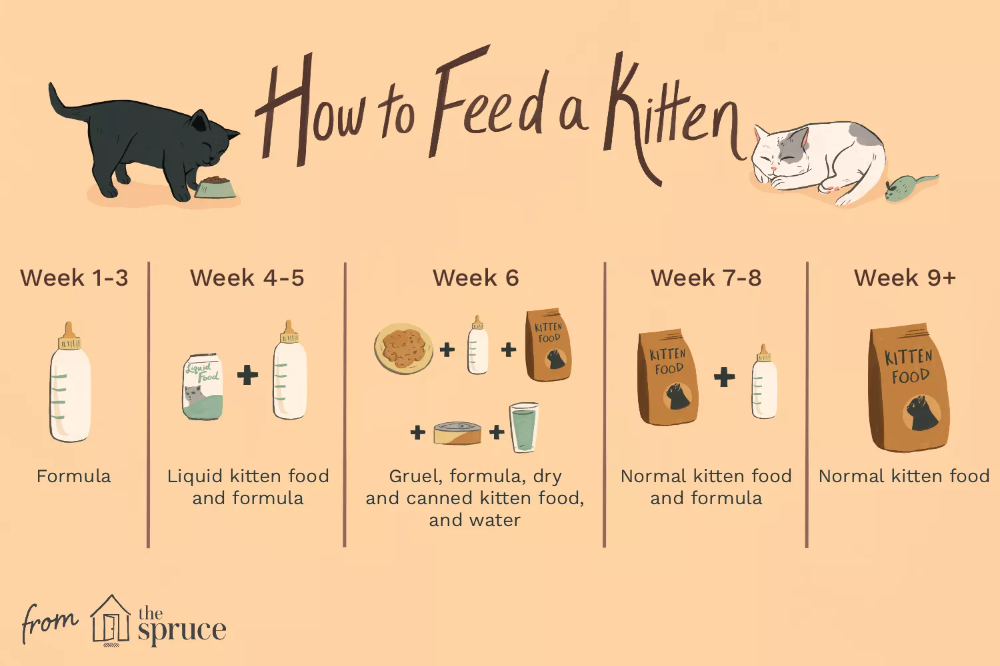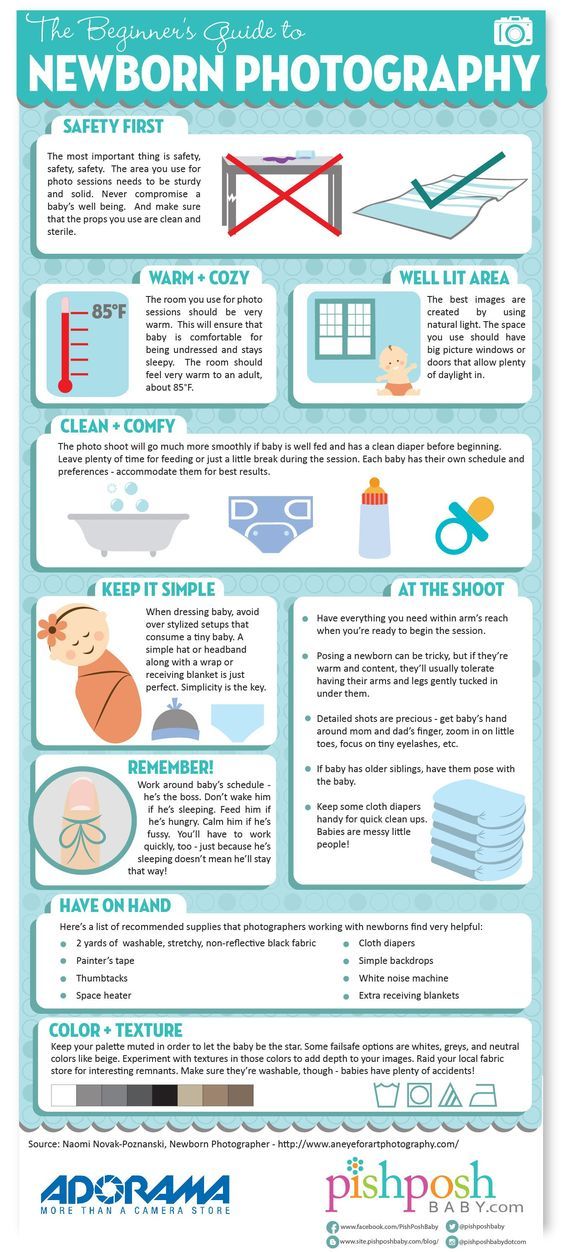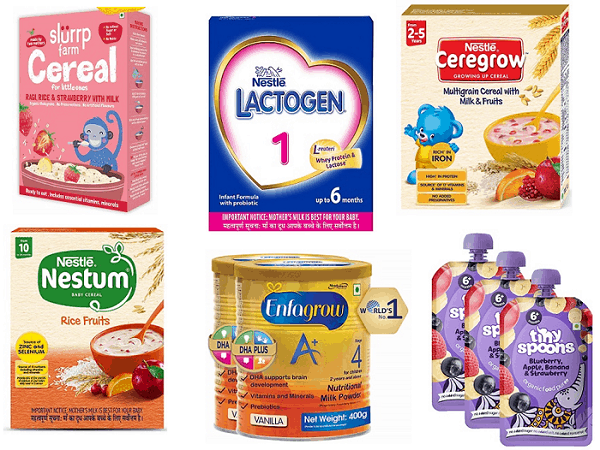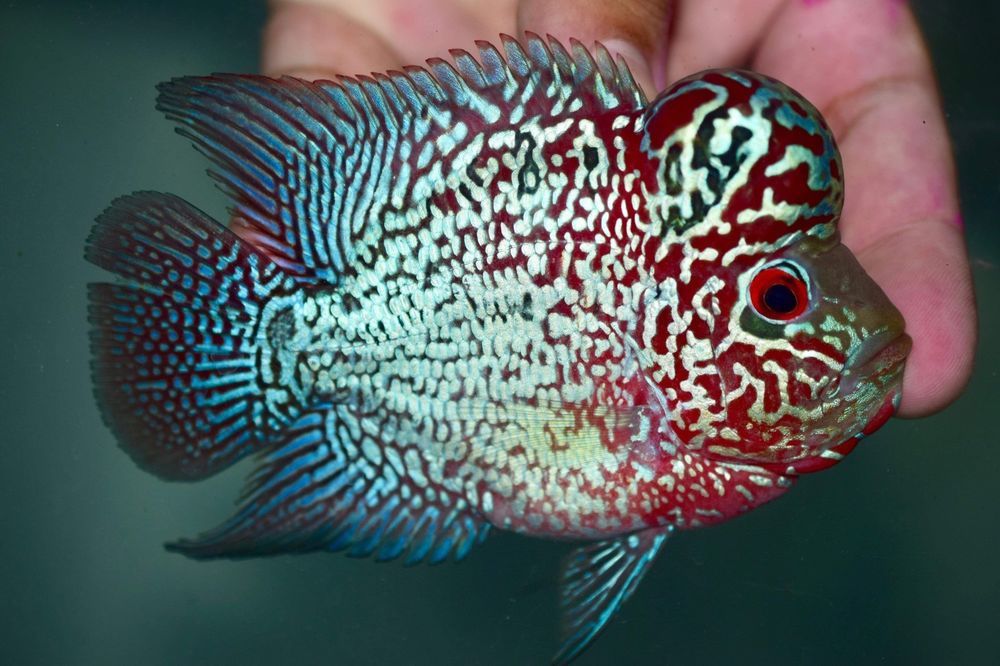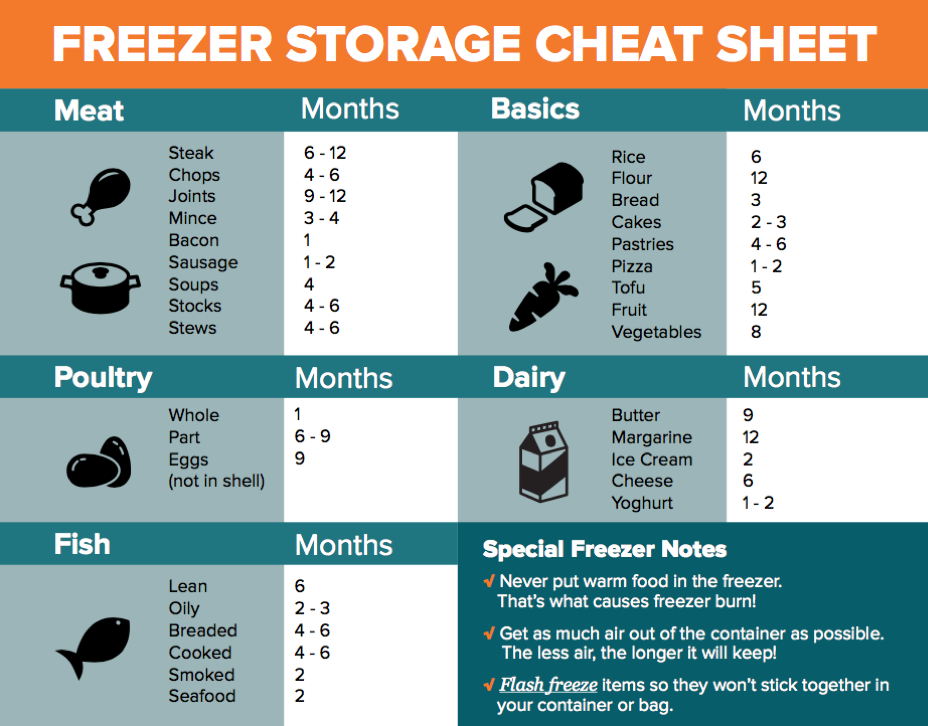How to make organic baby food at home
How to Make Homemade Baby Food
Contributors: Jill Weisenberger, MS, RDN, CDE, FAND
Published: December 17, 2019
Reviewed: November 12, 2019
Wiktory/ThinkstockBreastfeeding is recommended exclusively until six months of age and along with solid foods until at least one year of age. Talk with your pediatrician about the best time for your baby to start solids and how to introduce them. Monitoring for possible food reactions is especially important, as is providing foods that contribute key nutrients like protein, iron and zinc.
If your little one is ready for solid foods, you have numerous nutritious options at the supermarket, such as iron-fortified cereal, to feed your baby. And, if you prepare homemade baby food, you have even more variety: Not only can you pick from an assortment of fruits and vegetables in the produce section, but you can also use frozen veggies and fruits canned in their own juices.
Making your own food can help expose babies to more flavors, which may help them become more adventurous eaters. Furthermore, by managing added sugars and salt, you're in greater control of your baby's nutrition.
Follow these guidelines if you choose to prepare homemade baby food:
Getting Started
If you are interested in preparing your own baby food but find the idea daunting, start with just a few homemade items. Mashing a very ripe avocado or banana is a good place to begin. After your baby responds well, you can try preparing nutrient-rich foods that might not be as common in the baby food aisle, such as beets, broccoli, turnips, asparagus, spinach, blueberries, kale, mango and papaya. Just be sure to mash or puree the foods for your baby and serve only one new single ingredient food at a time.
Use items that are in season or foods that you’re preparing for the rest of the family, but without the added sugars, salt and seasonings. Everyone in the family will get to enjoy the same nutritious foods, which will save you time and effort.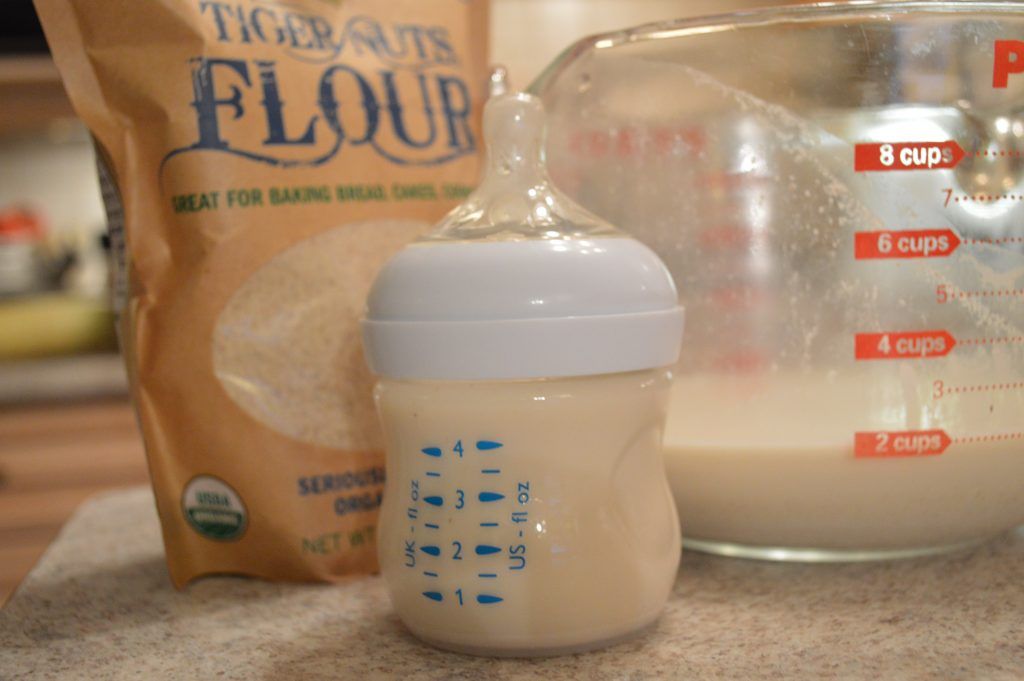
Preparing Food
Be vigilant about sanitation. Use only well-scrubbed and washed produce, clean hands, utensils, cutting boards and countertops.
- Wash and peel produce and remove any seeds or pits. Take special care with fruits and vegetables that are grown close to the ground as they may contain spores of Clostridium botulinum or contain other harmful bacteria that can cause food poisoning.
- Cook food until it's very tender. Steaming and microwaving in just a little water are good methods to retain vitamins and minerals in fruits and vegetables. When cooking meats and fish, remove all gristle, skin and bones before cooking.
- Puree or mash fresh fruit or fruit canned in its own juice. Never add honey to foods or drinks for children under 12 months, as it may contain Clostridium botulinum spores. Also avoid adding corn syrup or other sweeteners as they only provide extra calories but not nutrients.
- Make sure the texture and temperature are appropriate.
 Some foods pose a choking risk and are not recommended for infants, such as whole grapes, raisins, and pieces of hot dog. Pureed foods can be thinned, if needed, by adding breastmilk, formula, or water. Cow’s milk and milk alternatives should not be used during the first year. After warming solid foods, be sure to mix thoroughly and recheck the temperature so as not to burn the infant’s mouth.
Some foods pose a choking risk and are not recommended for infants, such as whole grapes, raisins, and pieces of hot dog. Pureed foods can be thinned, if needed, by adding breastmilk, formula, or water. Cow’s milk and milk alternatives should not be used during the first year. After warming solid foods, be sure to mix thoroughly and recheck the temperature so as not to burn the infant’s mouth. - Cook eggs, meats and poultry until well done. Babies are especially susceptible to food poisoning caused by eating undercooked meats, poultry and eggs. Be certain that all meats and fish are cooked to proper temperatures; 145°F for fish and whole cuts of beef and pork, 160°F for ground beef and egg dishes and 165°F for all types of chicken and poultry or leftovers.
- For convenience, freeze prepared baby food for later use. Freeze it in small portions in a clean ice cube tray. Once frozen, put the cubes into clean, airtight, freezer-safe food containers for single-serving portions.
 As another method, use the "plop and freeze" technique: plop meal-size spoonfuls of pureed food onto a cookie sheet, freeze, then transfer the frozen baby food to clean freezer-safe containers for storage in the freezer.
As another method, use the "plop and freeze" technique: plop meal-size spoonfuls of pureed food onto a cookie sheet, freeze, then transfer the frozen baby food to clean freezer-safe containers for storage in the freezer. - If you're cooking the same food for the rest of the family, remove the baby's portion before adding salt and seasonings. A baby's taste buds can be very sensitive. As the baby grows and becomes more used to table food, feel free to add seasonings other than salt.
Keeping Baby Safe
Preparing homemade baby food requires extra care to keep baby's food safe and to retain the nutrients from fresh foods. After you've prepared the food, either serve it or refrigerate it right away. Keep homemade baby food in a covered container for one or two days in the refrigerator or one to two months in the freezer with a label and date. Small portions served in separate dishes are ideal because any food that was served, but not eaten, must be thrown out.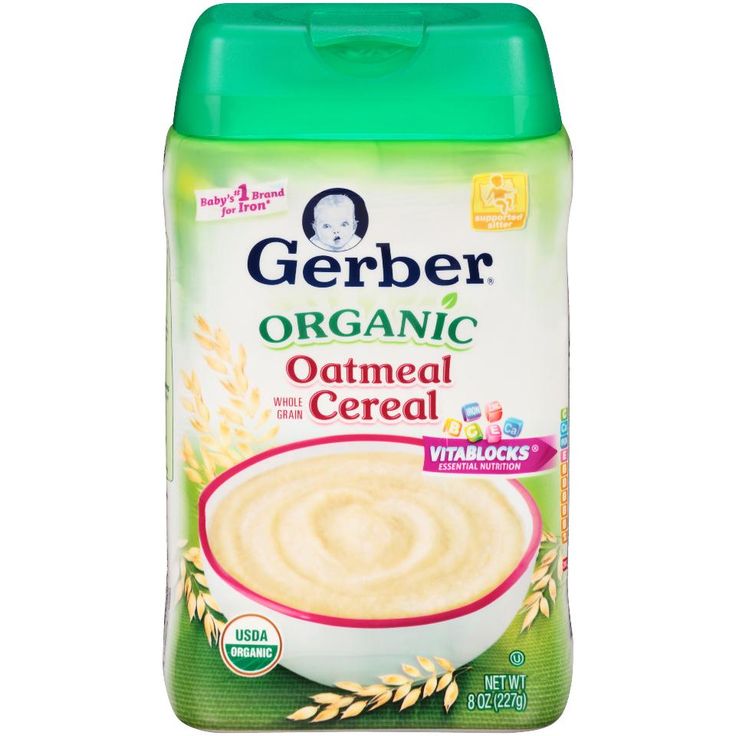 Bacteria thrive in the mouth, so if a spoon goes into the baby's mouth and then touches the food, that food should not be saved for later.
Bacteria thrive in the mouth, so if a spoon goes into the baby's mouth and then touches the food, that food should not be saved for later.
It's Fine To Buy Store-Bought Baby Food Too
Commercial baby foods are nutritious options for feeding baby, too. Today's commercial baby foods provide balance and variety with carefully controlled and consistent nutrient content, so don’t worry if you supplement your baby's intake with commercial baby foods. Be sure to talk to your baby's health care provider about which foods are best for your baby and if any dietary supplements may be recommended.
Tags
Find a Nutrition Expert
Looking for credible nutrition information and recommendations? The Academy of Nutrition and Dietetics' network of credentialed food and nutrition practitioners are ready to help!
See Directory
How to Make Healthy, Organic Homemade Baby Food
Published: · Updated: · This post may contain affiliate links.
Why make your own baby food? By making your own baby food you can have total control over what you feed your baby and you will know that what they are eating is free from salt, sugar, additives and fillers which are sometimes found in store-bought food.
It is very easy to make your own baby food — all you need is a regular or hand blender and fresh ingredients. And as an added bonus, if you make large amounts of his or her favorite meals you can freeze them and you’ll then be able to serve healthy, wholesome food in minutes and for every meal of the week. You can choose to use only the freshest, highest quality produce, and if you wish to make organic baby food, use only organic fruit and vegetables.
And if the thought of making your healthy, wholesome baby food is not enough, then how about the added incentive of saving money and the environment! Homemade baby food will cost much less to make that the equivalent shop bought products - and you will not have an endless supply of empty jars to have to recycle!
The cooking process.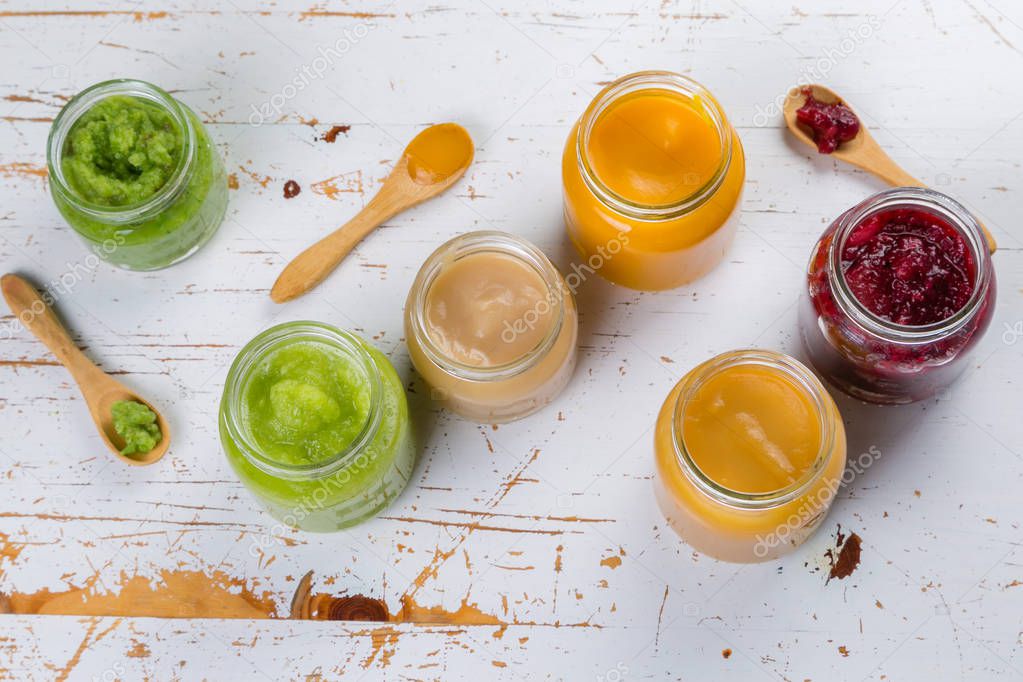 ..
..
Most foods will need to be baked, cooked or steamed (the exception to this are bananas, avocados and melons) until they are nice and soft. Once cooked, put them in a blender to be pureed, add a little of the cooking water to make them the necessary consistency and hey presto - wholesome, homemade baby food just like that.
Steaming is the best way to preserve nutrients, and it also is the best way to keep the fresh taste of the fruit and vegetables.
Why not buy a multi-layered steamer and cook different vegetables at once? The excess can be pureed and frozen for future meals. Steaming in a saucepan with just a little water is a perfectly good alternative if you don’t have a steamer. Broccoli and/or spinach are good choices in this case. Keep the bottom moist and cook until just tender.
Why not try baking some of the vegetables in the oven? Veggies such as potatoes, sweet potato and winter squashes are great when baked. Cook them until tender, scoop the flesh out of the skin and mash with a fork.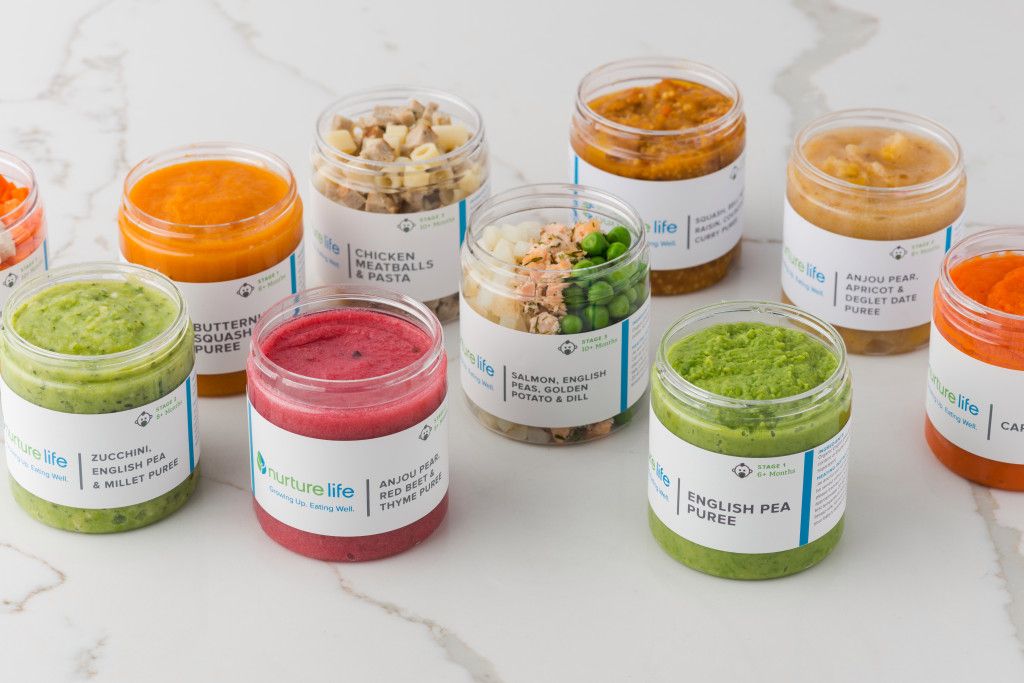 What could be simpler?
What could be simpler?
Puréeing...
A food processor can be used to purée large quantities of food - and is also useful for many other aspects of home cooking. But if you don’t have a processor, or don’t want to have to invest in one, why not buy a hand blender? These tend to be cheaper - and it is probably easier to find a space for one in your kitchen!
Storage...
If you prepare a large batch of food it can be poured into ice cube trays and then frozen - future meals in minutes! The flexible trays are best, and once the food is frozen just store the cubes in well sealed freezer bags - remember to label them though and it’s also helpful to add an expiry date (6 weeks from making the food is about right!)
And finally...
And one last reason — homemade baby food is much tastier than its store-bought equivalents. Your baby deserves to eat delicious, homemade food just as much as we do!!
Contributed by Sally Philpott.
- Learn how to make homemade baby cereals from whole grains.
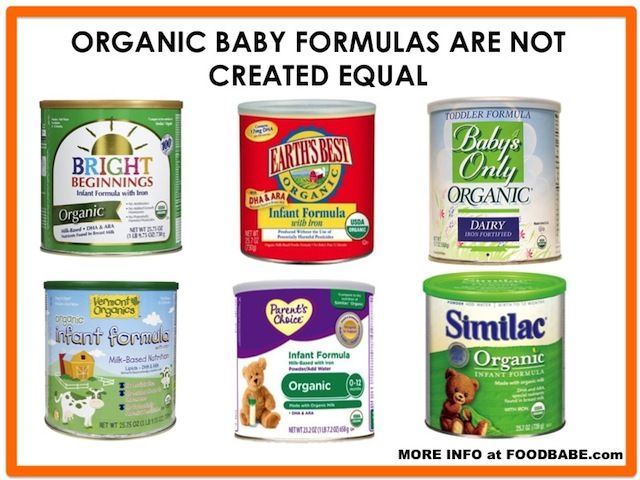
- Here's how to introduce finger foods to your baby.
More recipes you may enjoy
Reader Interactions
Baby puree at home: recipes
Baby puree from vegetables and fruits at home: cooking secrets
Vegetable and fruit puree often becomes the first meal of the baby after breast milk or formula, so many mothers prefer to cook it on their own. Although modern manufacturers convince us that baby food is devoid of preservatives and harmful additives, fresh vegetables and fruits are much healthier, especially when it comes to infant nutrition. Yes, and cooking baby puree at home is not so difficult. nine0005
Vegetables or fruits?
Let's try to make baby puree for our beloved baby. Despite the fact that pediatricians of the last century recommended starting complementary foods with fruits, it is better to first introduce the child to vegetables - modern doctors and nutritionists have come to this conclusion.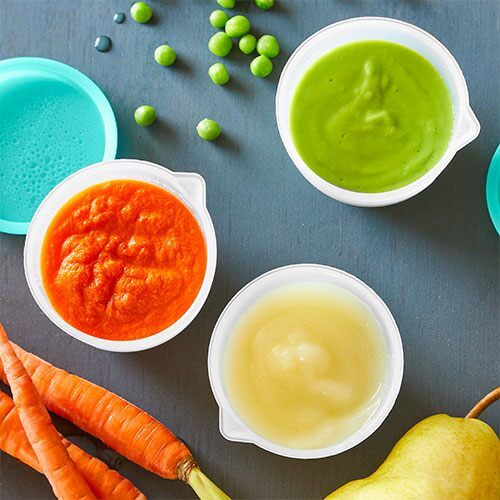 Boiled vegetables do not irritate the gastrointestinal tract, are better absorbed, satisfy hunger, do not cause allergies and increased gas formation. In addition, vegetables do not contain fructose, which irritates the pancreas. And one more weighty argument in favor of the fact that it is better to start with vegetables - fruits are tastier, and if the baby tries them first, he will refuse vegetables, because they will seem to him more insipid. nine0005
Boiled vegetables do not irritate the gastrointestinal tract, are better absorbed, satisfy hunger, do not cause allergies and increased gas formation. In addition, vegetables do not contain fructose, which irritates the pancreas. And one more weighty argument in favor of the fact that it is better to start with vegetables - fruits are tastier, and if the baby tries them first, he will refuse vegetables, because they will seem to him more insipid. nine0005
How to prepare baby vegetable puree
What can baby puree be made of? The ideal puree for the first feeding is from cauliflower or zucchini. A little later, you can introduce pumpkin, broccoli, carrots, potatoes and green peas. Before cooking, vegetables are washed well, peeled, cut into pieces and cooked - steamed, in the oven or in the usual way, in water. The first two methods are preferable because oven roasting and steaming preserve the vitamins, minerals, nutrients, and natural color in the vegetables. And most importantly - such vegetables are much tastier. Some nutritionists recommend boiling vegetables with their skins on before peeling them, so choose your own cooking method. nine0005
Some nutritionists recommend boiling vegetables with their skins on before peeling them, so choose your own cooking method. nine0005
If you do have to cook vegetables in a saucepan, use an enamel pot, add less water and put the vegetables in boiling water. Boil until soft, but do not overcook vegetables and fruits, otherwise they will become tasteless and lose a lot of vitamins. Ready vegetables are chopped with a blender until smooth and slightly diluted with water, vegetable broth, breast milk or mixture to a gruel state, since the child does not yet know how to digest thick food. Small pieces of vegetables in puree sometimes cause the baby to refuse to eat, so the knives in the blender should be well sharpened, and if there is no technique, you can grind the vegetables through a sieve. Salt and spices are usually not added to baby vegetable puree, and if the baby is more than 6 months old, you can put a little butter in the puree. nine0005
A few rules for making baby puree at home
- Use only fresh vegetables and fruits.
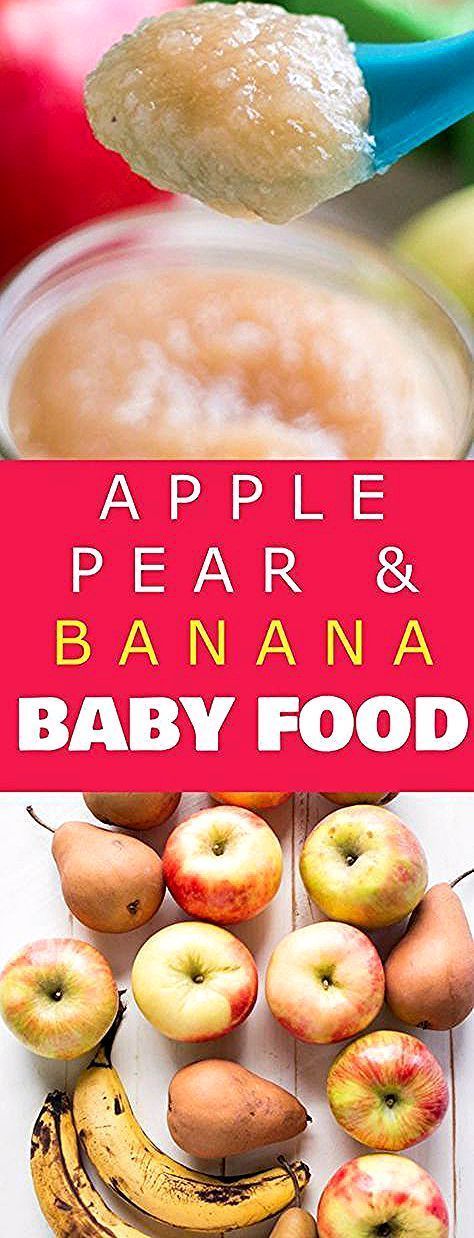
- Water for cooking vegetables must be filtered or bottled.
- If you are using frozen foods, choose only whole fruits and vegetables as they retain the most nutrients.
- All utensils for preparing baby food should be perfectly clean, so if the knife falls on the floor, it should be washed well. Also, the presence of pets in the kitchen during the cooking process is not allowed. nine0026
- Avoid vegetables and fruits high in nitrates, such as spinach, lettuce, beets, melons, and watermelons, in infants' diets.
- Store-bought vegetables are recommended to be soaked in water to remove nitrates: 1-2 hours for this, up to 24 hours for potatoes.
- Mix sour-tasting fruits and berries with sweet fruits - for example, blackcurrant goes well with a banana or pear. Sour puree is unlikely to please the baby. nine0026
- Give your child only fresh food, but yesterday's puree from the refrigerator is better to eat yourself.
DIY fruit puree for children
Children are more likely to eat fruit puree, because fruits are tastier and sweeter. Fruits contain a large amount of vitamins, minerals, trace elements, fiber and antioxidants, so they are very useful for a growing body. However, fruits are strong allergens, especially berries, bananas, pomegranates and apricots, so they should be given with caution, watching the child's reaction. The most low-allergenic fruits are apples and pears, so it is better to start complementary foods with them, and then introduce all other fruits. First, the baby is fed with a one-component puree made from only one product, and then you can mix different vegetables and fruits, and not only among themselves. Very tasty combinations of fruits and vegetables, such as apples and zucchini, pumpkins and pears. nine0005
Fruits contain a large amount of vitamins, minerals, trace elements, fiber and antioxidants, so they are very useful for a growing body. However, fruits are strong allergens, especially berries, bananas, pomegranates and apricots, so they should be given with caution, watching the child's reaction. The most low-allergenic fruits are apples and pears, so it is better to start complementary foods with them, and then introduce all other fruits. First, the baby is fed with a one-component puree made from only one product, and then you can mix different vegetables and fruits, and not only among themselves. Very tasty combinations of fruits and vegetables, such as apples and zucchini, pumpkins and pears. nine0005
Fruits must be of good quality, without damage, ripe and juicy, and the rules for preparing fruits do not differ from the rules for cooking vegetables. Naturally, fruit puree is not sweetened with honey and sugar - the later the child learns the taste of sugar, the stronger his health will be.
Aromatic pumpkin puree
Babies love to eat pumpkin because of its pleasant sweet taste, besides pumpkin is very healthy. It contains a whole storehouse of various vitamins, including vitamin T, which normalizes the metabolism in the body. For pumpkin puree, small pumpkins are suitable, since large fruits are not as tasty and difficult to peel. nine0005
Cut the pumpkin in half, and then into small slices, one or two of which (depending on the appetite of the crumbs) cut into cubes. Boil the pumpkin in a double boiler or in water for 20 minutes, while warm, beat with a blender to a smooth puree and dilute if necessary with water or a mixture. Add oil and salt depending on the age of the child.
Gentle Broccoli Puree
One of my favorite homemade baby puree recipes is broccoli. This cabbage is extremely useful because it contains potassium, iron, calcium and other valuable substances. It has much more vitamin C than lemon, and the reason for its nutritional value is its high protein content.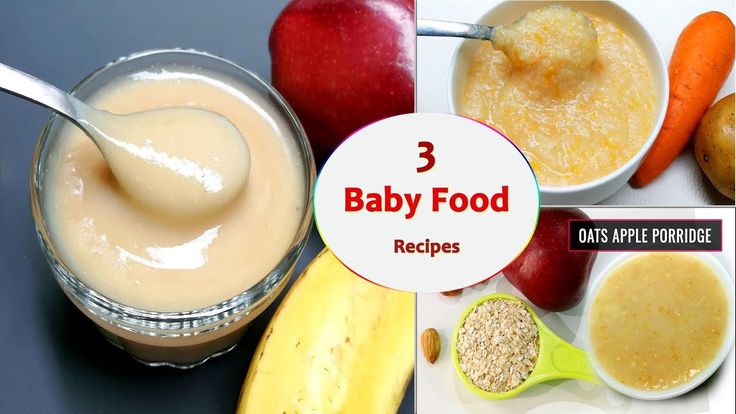 nine0005
nine0005
Separate the broccoli into florets, wash thoroughly and steam for 20 minutes. Cabbage cooks faster in water - fresh broccoli will take 7 minutes, and frozen - about 15 minutes. Broccoli puree does not need much water, it should lightly coat the vegetables. After the cabbage becomes soft, chop it in a blender or pass through a sieve. If you're mashing for kids older than a year old, be sure to add butter - the little ones will gobble up broccoli on both cheeks! nine0005
How to make baby pear puree at home
Pear is a very delicate, tasty and healthy fruit that rarely causes intolerance. In addition to the high vitamin value, the pear has other beneficial properties - it facilitates digestion and removes toxins from the body.
For baby food, choose green pears to reduce the risk of allergies, which are rare among babies. Peel the fruits from the peel and core with seeds, and then stew the pear in a bowl with a thick bottom in a small amount of water for 15 minutes.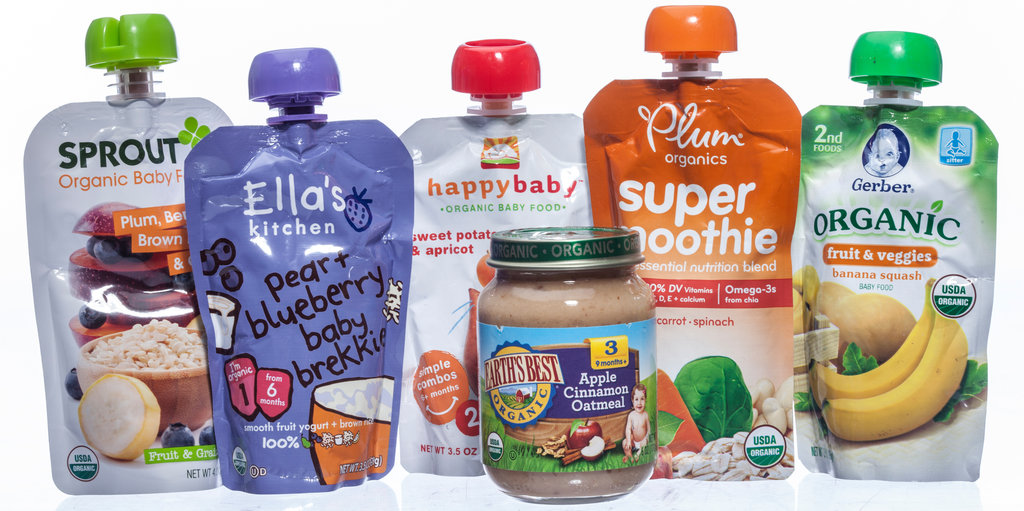 Let the pear cool slightly and puree it in a blender with a little of the remaining pear broth. For large kids, fruits can not be boiled, but add half a teaspoon of natural honey to the puree. nine0005
Let the pear cool slightly and puree it in a blender with a little of the remaining pear broth. For large kids, fruits can not be boiled, but add half a teaspoon of natural honey to the puree. nine0005
Zucchini and apple puree
Little gourmets will love this delicious puree, besides, zucchini is considered the most hypoallergenic vegetables, which, due to their high potassium content, have a beneficial effect on the heart. Apples contain iodine, iron and phosphorus, and due to the high concentration of vitamin C, apples help in the prevention of colds and viral infections.
Wash the zucchini and apples well, de-seed them, cut into pieces and cook in a saucepan for about 20 minutes, considering that the zucchini will cook 5 minutes faster. By the way, apples are steamed for 15 minutes, zucchini - 10 minutes. Next, vegetables and fruits are chopped in a blender, mixed and brought to a boil. For allergic children, this is the best side dish! nine0005
Exotic mango
Sometimes you can pamper your baby with exotic fruits - for example, make mango puree.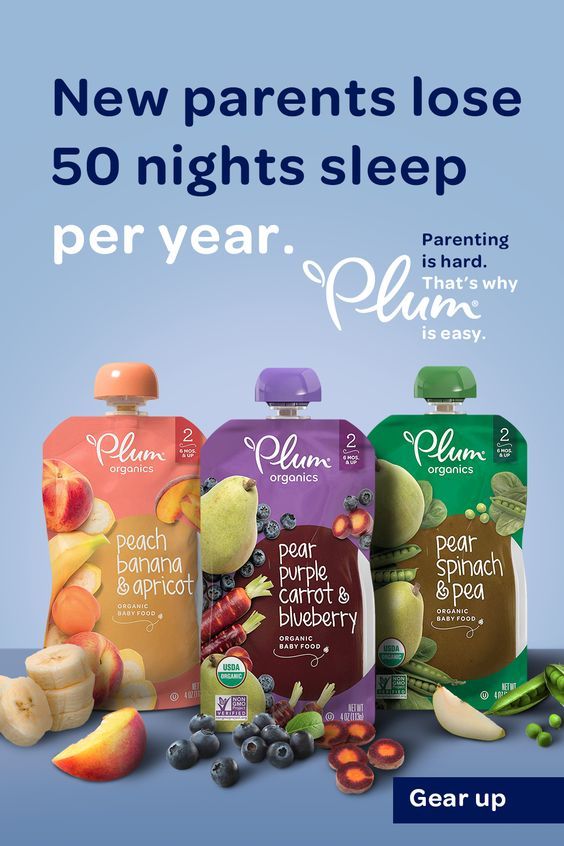 This is a very delicate fruit with an original taste, containing 12 amino acids and improving sleep.
This is a very delicate fruit with an original taste, containing 12 amino acids and improving sleep.
Choose only ripe fruits that are soft and reddish-yellow in color. Peel the mango from a thick skin and a large bone, put the pulp in a blender, add 2 tbsp. l. water and mash it, and then heat it in a saucepan for several minutes. For a baby up to a year old, it is better to give mashed potatoes with heat treatment to facilitate digestion, and older children can be fed raw mangoes. nine0005
Carrot and Potato Puree
Make normal potato puree without oil. Peel the carrots, grate them and stew them with butter and vegetable broth - about 1 tsp is required for 200 g of carrots. butter and 150 g of broth. When the carrot becomes very soft, wipe it through a sieve, and then put it on a plate, put mashed potatoes on the second half. Let the child choose whether to mix two types of puree for him or eat separately!
Pumpkin and apple puree
This sweet, sugar-free pumpkin-apple puree, cooked in a double boiler, is suitable for children who are already accustomed to “adult” food and are able to perceive a new unusual dish.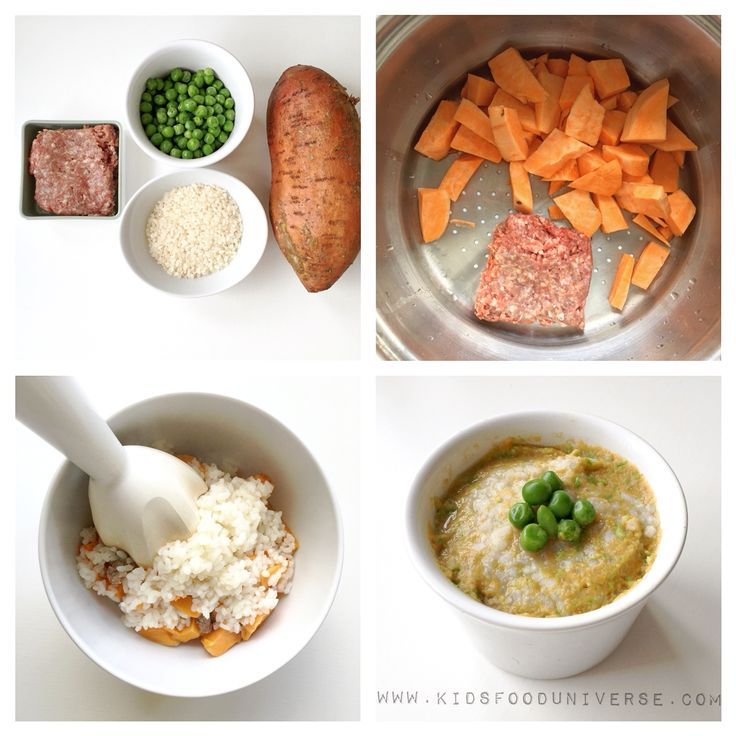 It is better to take a pumpkin with a gray or green skin and with bright pulp - such fruits contain more vitamins and other useful substances. Apples are green because they have fewer allergens.
It is better to take a pumpkin with a gray or green skin and with bright pulp - such fruits contain more vitamins and other useful substances. Apples are green because they have fewer allergens.
Cut pumpkin and apple flesh without peel or seeds into pieces, place in a steamer and cook for 20 minutes. Grind pumpkin, apples and raisins in a blender or by hand with a pusher if the child has already learned to chew. They say that this puree is very good for skin and hair, and you can check the truth of this statement yourself if you start feeding this dish to your baby. nine0005
In autumn, you can take care of preparing vegetables for baby purees. Some vegetables, such as pumpkin, carrots and apples, are stored fresh, and zucchini, broccoli, berries are frozen in small portions, because due to frequent freezing and thawing, vegetables lose vitamins and become tasteless. You can roll up fruit and vegetable puree in jars, but this snack should not be given to babies. Remember that the taste of vegetables determines whether the baby will love them in the future, so try to prepare an appetizing and tender puree - for health and good mood! nine0005
Baby food at home: recipes, videos
Growing up a little person is a delightful process that cannot but please the parents of the crumbs.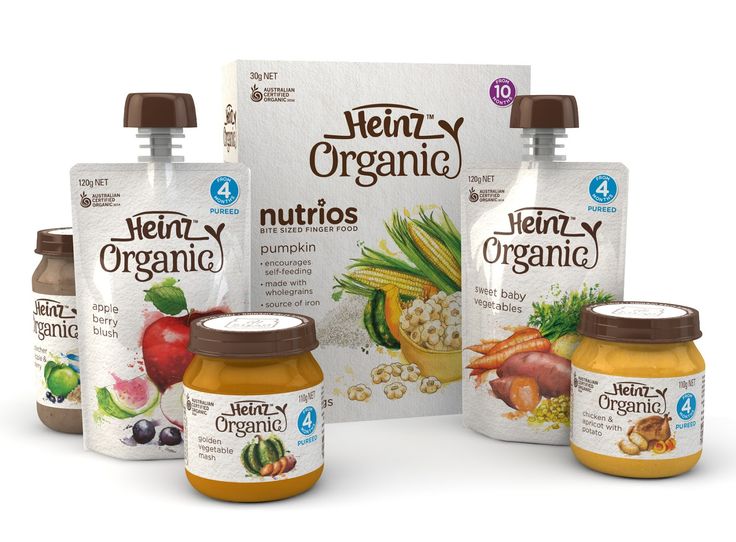 However, the first feeling that mom and dad face when it comes time to introduce complementary foods into a child's diet is confusion.
However, the first feeling that mom and dad face when it comes time to introduce complementary foods into a child's diet is confusion.
Which food is the most healthy, hypoallergenic and delicious? Most often, the first "real" meal of the crumbs after mother's milk and formula is vegetable or fruit puree. The choice of baby food on store shelves is very wide - each manufacturer tries to convince the buyer that jars with beautiful labels contain only natural products, there are no dyes, sweeteners and other harmful additives. A variety of "meals" for babies in factory packaging marked "3+ months." does not guarantee the true usefulness of the product that is inside. Every mother understands that complementary foods prepared on her own, from natural products, are much better for her child. nine0005
Another advantage of making your own baby food is that you can choose the best ingredients, wash fruits, berries or vegetables thoroughly, peel them well and remove damaged parts. In addition, the parents of the crumbs themselves can choose the way - how best to cook baby food: food can not only be boiled, but also baked in the oven or cooked in a double boiler.
In addition, the parents of the crumbs themselves can choose the way - how best to cook baby food: food can not only be boiled, but also baked in the oven or cooked in a double boiler.
It is also important that home-made baby puree is much tastier, it will undoubtedly be useful for a growing organism and will not cause allergies! Even the simplest children's dish, prepared by mom, keeps the warmth of caring hands and cannot be compared with expensive dishes from the store. nine0005
What should be the correct complementary foods for children? Of course, you should start with one ingredient (such purees are called one-component purees), then move on to more complex options. Experts emphasize that the most suitable product for the first "dish" is zucchini. Cauliflower can also be considered neutral. Gradually it will be possible to introduce carrots, pumpkins, potatoes, broccoli and green peas. At the first stage of the introduction of complementary foods, it is better to give preference to vegetable purees and switch to fruit purees when the child already treats “serious” food well.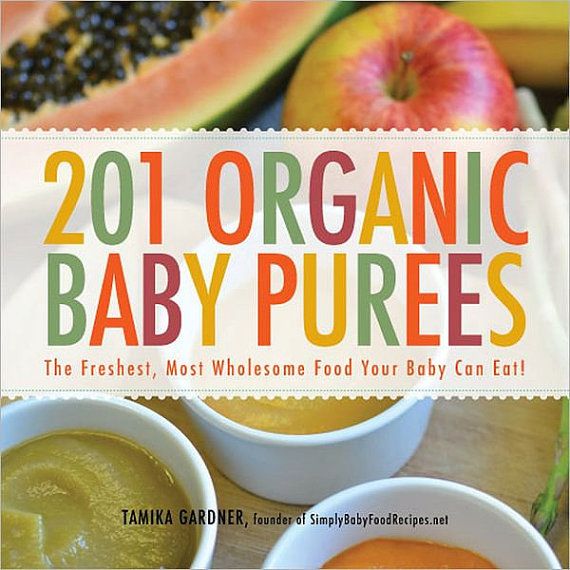 nine0005
nine0005
The basic rules and principles of preparing high-quality baby food yourself:
- it is best to take fresh products for preparations: fruits from the tree, berries from the bush and vegetables from the garden are much more useful than those that have already been in the refrigerator for a week. If there are no seasonal vegetables at the time of preparation, the use of frozen foods is acceptable, but in this case, try to give preference to whole fruits - they retain the greatest amount of nutrients; nine0026
- only filtered water should be used for cooking vegetables;
- Preparing baby food requires, if not separate dishes, then thoroughly washed ones. Do not, for example, cut vegetables on a meat board. If there is a dog or cat in the house, then you need to restrict her access to the kitchen when food is being prepared;
- It is not recommended to use vegetables and fruits in the diet of infants, in which the content of chemical additives is consistently high.
 These often include watermelons and melons, beets, spinach and lettuce; nine0026
These often include watermelons and melons, beets, spinach and lettuce; nine0026 - It is better to add water to vegetables purchased on the market before cooking: put carrots, potatoes, zucchini and cauliflower in filtered water for a couple of hours - this will remove nitrates;
- do not leave excess mashed potatoes for the next meal: the child should be given only freshly prepared food, and "yesterday's" mashed potatoes are best eaten by adults or given to pets;
- you can choose cream, boiled egg yolk, grated cheese or finely chopped dill as an additive to puree - this will diversify dishes for children from 8 months; nine0026
- try it! Children's food can and should be enjoyed by an adult.
There is another question that often worries parents: is it permissible to preserve baby puree and how to do it correctly? After all, such complementary foods for the developing body of a small child must be prepared daily for one or even two or three years: until the baby is ready to eat adult food from the common table. Not every mother has the time and opportunity to prepare baby puree daily, but you don’t want to buy food for the baby in the store. In addition, it is obvious that in the winter-spring period it is almost impossible to find fruits and vegetables grown without the addition of chemicals. The answer to the question is quite simple: the requirements for the conditions for preparing baby food are very strict (keeping the temperature, sterilizing jars, etc.), but using an autoclave solves all problems: all that is required is to load jars with blanks into the autoclave for 20 minutes and set temperature 120 degrees. After cooling, it is better to store baby food in a dark, cool place for about 12 months, daily delighting the child with homemade homemade food. nine0005
Not every mother has the time and opportunity to prepare baby puree daily, but you don’t want to buy food for the baby in the store. In addition, it is obvious that in the winter-spring period it is almost impossible to find fruits and vegetables grown without the addition of chemicals. The answer to the question is quite simple: the requirements for the conditions for preparing baby food are very strict (keeping the temperature, sterilizing jars, etc.), but using an autoclave solves all problems: all that is required is to load jars with blanks into the autoclave for 20 minutes and set temperature 120 degrees. After cooling, it is better to store baby food in a dark, cool place for about 12 months, daily delighting the child with homemade homemade food. nine0005
Pumpkin puree: tender and aromatic
Pumpkin is a delicious vegetable that is good for babies. This fruit has a beneficial effect on digestion, is well absorbed by the child's body and is rich in various vitamins: A, C, B, B2, E, PP, T. In addition, the carotene content in pumpkin is 5 times higher than in carrots!
In addition, the carotene content in pumpkin is 5 times higher than in carrots!
Baby pumpkin puree has a sweet taste, so the kids eat this dish with great pleasure. For preparations, it is better to buy small whole pumpkins, as they usually taste better than large ones and are easier to peel. nine0005
- Rinse pumpkin well under running water, peel, cut in half, remove seeds.
- Then you need to cut the fruit into small cubes, put in a saucepan and pour water. Cooking time after boiling - 20 minutes. You can also steam pumpkin: it will retain more nutrients with the same cooking time.
- The next step is to beat the cooked pumpkin with a blender until the consistency of a gentle puree. If the dish turned out to be thick, add water or milk (milk mixture). nine0026
- Vegetable oil and salt are added to pumpkin puree to taste, but these additives should be used with caution: only if they are acceptable for the age of the child.
For babies older than 8 months, pumpkin puree is supplemented with other fruits and vegetables, and also added to porridge.
Broccoli puree: simplicity and elegance
Broccoli is not just cabbage, but a storehouse of vitamins and microelements! Beautiful on the outside and fantastic on the inside - the high content of protein and vitamin C (there is more in broccoli than in citrus!) deserves special attention. There are many articles on the Internet about the benefits of broccoli, and preparing this product is not at all difficult. nine0005
To prepare this type of cabbage for baby food, you need to choose the highest quality product: the inflorescences must be unopened, green, moderately elastic.
- Broccoli should be washed, cut into pieces and boiled. Steaming will take 20 minutes, in water - faster: fresh cabbage should be boiled for a little more than 5 minutes, and frozen - at least 10. When cooking, do not pour a lot of water, it should only cover the vegetables a little.
- When the cabbage is cooked, take it out, transfer it to a blender bowl and grind to a puree state, add a little warm boiled water.
 nine0026
nine0026 - Add salt and butter to taste.
Pear puree: a fragrant dessert
It's no secret that babies love fruit puree - almost all children like sweet dishes. The pear is a suitable option for the first one-component fruit food - a sweet fragrant fruit that has a high concentration of vitamins, stimulates digestion and almost never causes allergies.
If you want to cook a safe puree for your child at home, then it is best to choose green pears, these are the fruits that are considered to be the least allergenic. nine0005
- Fruit must be peeled, core removed with seeds, cut into cubes.
- Transfer the pear to a heavy-bottomed enamel saucepan, add a little water and simmer over low heat for 15-20 minutes.
- Then transfer to a blender bowl and puree until smooth. If the puree is too thick, add a little warm boiled water.
- You can dilute the dish with milk or formula - it depends on the taste preferences of the baby.
 nine0026
nine0026
A similar recipe is used for applesauce. In the future, try to combine these two fruits in one dish.
Classic apple-zucchini puree
A good appetite of a baby pleases every mother, but little gourmets are often capricious, and it is not easy to please them. Zucchini and apple puree is a classic combination of products that will diversify the baby's menu already in the fifth or sixth month of life.
This complementary food contains only hypoallergenic products, has a positive effect on the functioning of the heart, and stimulates the strengthening of the immune system. nine0005
- Selected products should be thoroughly washed, peeled, core removed from apples.
- Cut zucchini and apples into cubes, put fruits in a cooking pot first - they should cook for 5 minutes longer, and then vegetables. The total cooking time is 20 minutes.
- When the products become soft, they must be ground to a puree with a blender.
- To taste - dilute with water, add salt, oil.
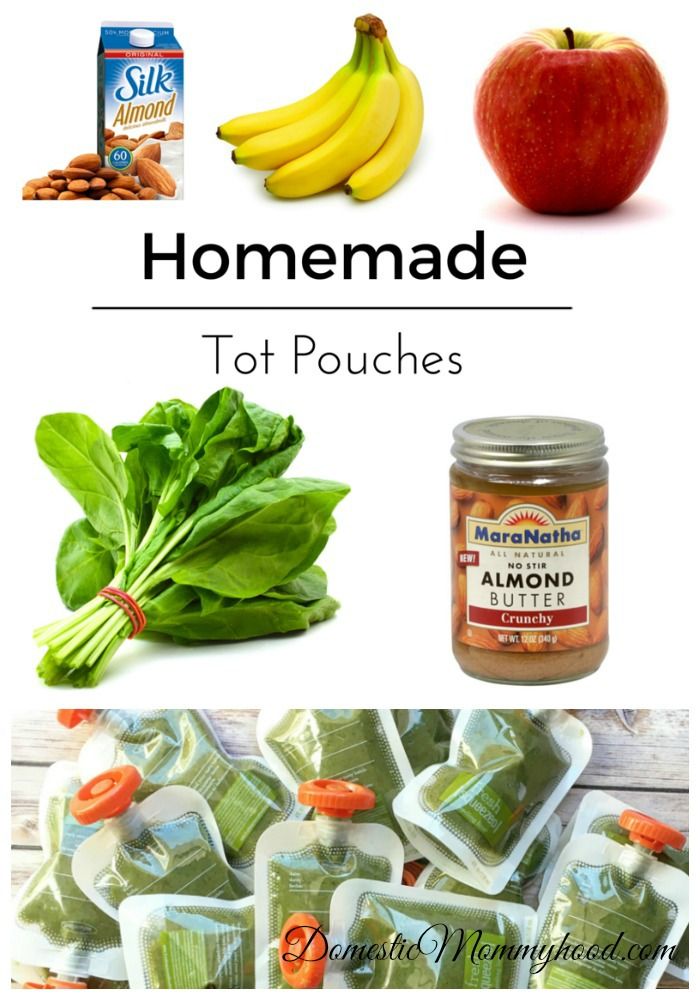
This puree can be considered a meal on its own for the little ones or a delicious side dish for older kids. nine0005
Colorful Carrot-Potato Puree
For many parents, carrots and potatoes are the simplest and most understandable type of complementary food for the baby. However, if you cook and serve standard products a little differently than usual, you can improve the traditional taste of a classic dish.
Young potatoes should not be chosen for baby puree - they contain a lot of starch. Carrots, on the contrary, it is better to buy young ones.
- Wash and peel the vegetables thoroughly and cut into cubes. nine0026
- It is better to cook mashed potatoes and carrots by steaming, vegetables should be boiled separately. Cook until tender, 20 minutes on average.
- Separately puree the vegetables in a blender, diluting with warm water if needed.
Both types of puree are beautifully placed on a plate without mixing: the child can decide for himself whether to mix food or eat separately.
Exotic variety: mango puree
Tropical fruits should not be offered to a small child before the age of 7-8 months and only if there was no allergy to other foods.
Mango is an aromatic fruit with an original pleasant taste. This fruit helps to overcome colds, reduce inflammation in the body, improve sleep and normalize the functioning of the stomach.
To feed the baby, ripened fruits should be selected - quite soft, yellow-red in color.
- Fruit should be peeled and pitted, cut into cubes. nine0026
- Put the raw mango into a blender, purée, transfer to a heavy-bottomed pot and simmer for a few minutes.
Older children may be offered uncooked mango puree. This fruit is completely independent - no need to add sugar or water!
Sweet pumpkin puree with apple
This puree is called sweet, as both pumpkin and apples are high in sugar. Such a dish is well suited as a dessert for children who already eat “serious” food well - vegetable purees and cereals. nine0005
nine0005
In addition, such complementary foods are a great option for the autumn-winter period: seasonal products contain enough choline, a lot of fiber, natural proteins and vitamins (groups A, B, C, E, etc.), zinc, sodium, calcium and only!
- Pumpkins and apples must be peeled, peeled and seeds removed, cut into cubes and sent to a double boiler.
- Cook for about 20 minutes until the food is soft. Then place them in a blender bowl, add raisins and chop. If the child chews well, mash everything with a fork, and leave the raisins whole. nine0026
Hearty puree with celery and turkey
For older kids, meat is added to vegetable dishes - turkey fillet is an excellent option for developing a child's taste preferences. Appetizing and fragrant meat puree includes only three ingredients: celery root, turkey fillet, butter.
The proportion of meat and celery should be approximately 10:1, the amount of butter to your taste.
- The turkey fillet must be boiled in the "second stock" for about 20 minutes after boiling.


